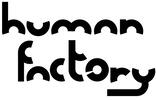tagging of emotions
|

To extract emotional expressions from text -- such as from customer support complaints -- traditional accounts would require training on at least six dimensions, one for each of the six independent expressions: anger, sadness, fear, disgust, happiness and surprise.
That leads to two big difficulties.
First, because people can mix multiple expressions together, that means there are a combinatorial explosion of possible expressive mixtures (729, in fact). It is therefore extremely cumbersome to even manually tag text with the right emotion mixture, and difficult for machine learning to handle it even if manual tagging were possible.
Second, even if the many expressive mixtures can be recognized from text, with more than 700 qualitatively distinct expressions, what do they all mean in customer support terms?!
EMOTION CHIP technology addresses these issues. It is lower dimensional than traditional theories, requiring only two dimensions for tagging and learning. But it is theoretically rich, with 81 qualitatively distinct emotional expressions, each recognizable, and each with a rigorous quantitative meaning.
~~~~~~~~~~~~~
Background on the EMOTION CHIP:
Most affective computing systems today include (at least) six dimensions -- anger, sadness, fear, disgust, happiness and surprise. Because people can mix multiple expressions together, that means there is a combinatorial explosion of possible expressive mixtures (729, in fact). But what do these more than 700 expressions actually mean? Building software to recognize a consumer’s emotional expression is a complicated challenge. But the power in doing so comes from understanding what the expressions mean, and thereby knowing how the software should respond.
EMOTION CHIP technology addresses this issue, giving rigorous meanings to emotional expressions in the context of your business.
This new groundbreaking theory is the subject of Human Factory founder Mark Changizi's sixth book, WHAT EMOTIONS MEAN.
That leads to two big difficulties.
First, because people can mix multiple expressions together, that means there are a combinatorial explosion of possible expressive mixtures (729, in fact). It is therefore extremely cumbersome to even manually tag text with the right emotion mixture, and difficult for machine learning to handle it even if manual tagging were possible.
Second, even if the many expressive mixtures can be recognized from text, with more than 700 qualitatively distinct expressions, what do they all mean in customer support terms?!
EMOTION CHIP technology addresses these issues. It is lower dimensional than traditional theories, requiring only two dimensions for tagging and learning. But it is theoretically rich, with 81 qualitatively distinct emotional expressions, each recognizable, and each with a rigorous quantitative meaning.
~~~~~~~~~~~~~
Background on the EMOTION CHIP:
Most affective computing systems today include (at least) six dimensions -- anger, sadness, fear, disgust, happiness and surprise. Because people can mix multiple expressions together, that means there is a combinatorial explosion of possible expressive mixtures (729, in fact). But what do these more than 700 expressions actually mean? Building software to recognize a consumer’s emotional expression is a complicated challenge. But the power in doing so comes from understanding what the expressions mean, and thereby knowing how the software should respond.
EMOTION CHIP technology addresses this issue, giving rigorous meanings to emotional expressions in the context of your business.
- What is the consumer’s feeling about what just happened?
- What does the consumer want?
- How serious is he about it?
- What is the consumer’s opinion about the entity it is interacting with?
- How sure of himself is the consumer?
- How disagreeable is the interaction thus far?
This new groundbreaking theory is the subject of Human Factory founder Mark Changizi's sixth book, WHAT EMOTIONS MEAN.
